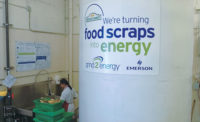Selecting the right plumbing products for any commercial job is a balancing act that would make circus clowns proud — budget, function, conservation, maintenance, who’s going to use the fixtures and how. It’s a tricky equation to meet every need, and making the wrong choices can lead to frustrated users, wasted resources and higher costs.
Mistakes in selecting plumbing products most often happen when a specifier doesn’t take the time to fully understand the needs of the owner and building occupants. How much traffic is expected in the restrooms? What’s the size of the kitchen and how will it be used? What building style does the owner prefer?
Really poor plumbing choices can hamper basic function, but on a smaller scale, even less-than-ideal selections can lead to unnecessary waste and frustrated users.
Keep both owners and users happy by following these ABCs of commercial plumbing selection.
Accounting
Getting the right plumbing solutions for any job starts with understanding the budget. A larger budget allows engineers to specify products that not only meet performance needs but also improve the user experience, such as hands-free flush valves and faucets. But if a budget is getting squeezed, the engineer will have to look for ways to protect vital function without some of the technology users have come to expect.
Tighter budgets may also tempt specifiers to choose cheaper, less durable options, which can end up costing more over the life of the building.
Understanding what elements are optional — perhaps a specific finish or feature — and which are not — such as durability and tamper-resistance — will allow specifiers to make the best choices within the budget parameters.
Balancing needs
Sustainability vs. functionality. Ideal use vs. real-world conditions. Striking the right balance between expectations and reality — or between sometimes contradictory demands — is one of the trickier questions specifiers must address for every project.
This is where understanding specific facility demands is most crucial. For example, a high-volume restroom with sensor faucets running solely on batteries may encounter frequent downtime when batteries die and need to be replaced. In situations like these, a better option would be to specify a hydrogenerator that harnesses the flow of water to provide continuous power without the need for regular battery replacements.
In a commercial kitchen, workflow, space restrictions and even the menu can influence the plumbing design. For example, hand sinks should be located near prep areas. The proximity reduces the number of steps that workers need to take and also provides an important visual cue to wash up frequently. Research has shown that more and better-placed hand sinks are connected to better hand hygiene, a leading factor in preventing the transmission of foodborne illness.
Saving water is often among the priorities for a facility’s design, particularly as water conservation continues to take a more central role in sustainability discussions. But specifying with only reduced consumption in mind can backfire. Ultra-low flow rates can lead to user frustration when it takes twice as long as normal to rinse soap off their hands.
Keeping a balance of conservation and function in mind will help ensure users have a positive experience while also meeting the facility’s sustainability goals.
Cost of ownership
Even when engineers have navigated the intricacies of budget and performance to design ideal plans for a project, last-minute changes can undermine them. Plumbing fixtures are often “value engineered” at the last minute — high-quality products swapped out for inferior ones in order to save money. This is due in part to the fact that faucets or other plumbing elements are typically installed in the final stages of a project, when the budget may be strained.
Considering and conveying information to operators about the total cost of ownership may help specifiers circumvent this kind of downgrade. Total costs include not only the initial purchase price and installation cost, but also maintenance over time, associated downtime when repairs are needed and eventual replacement costs. Downgrading a faucet or other plumbing fixture to a less reliable option may save money upfront, but if it needs ongoing maintenance or repeated replacement, that initial savings is quickly negated.



